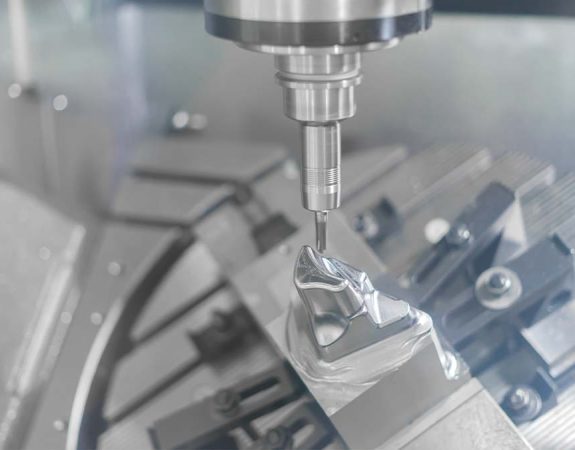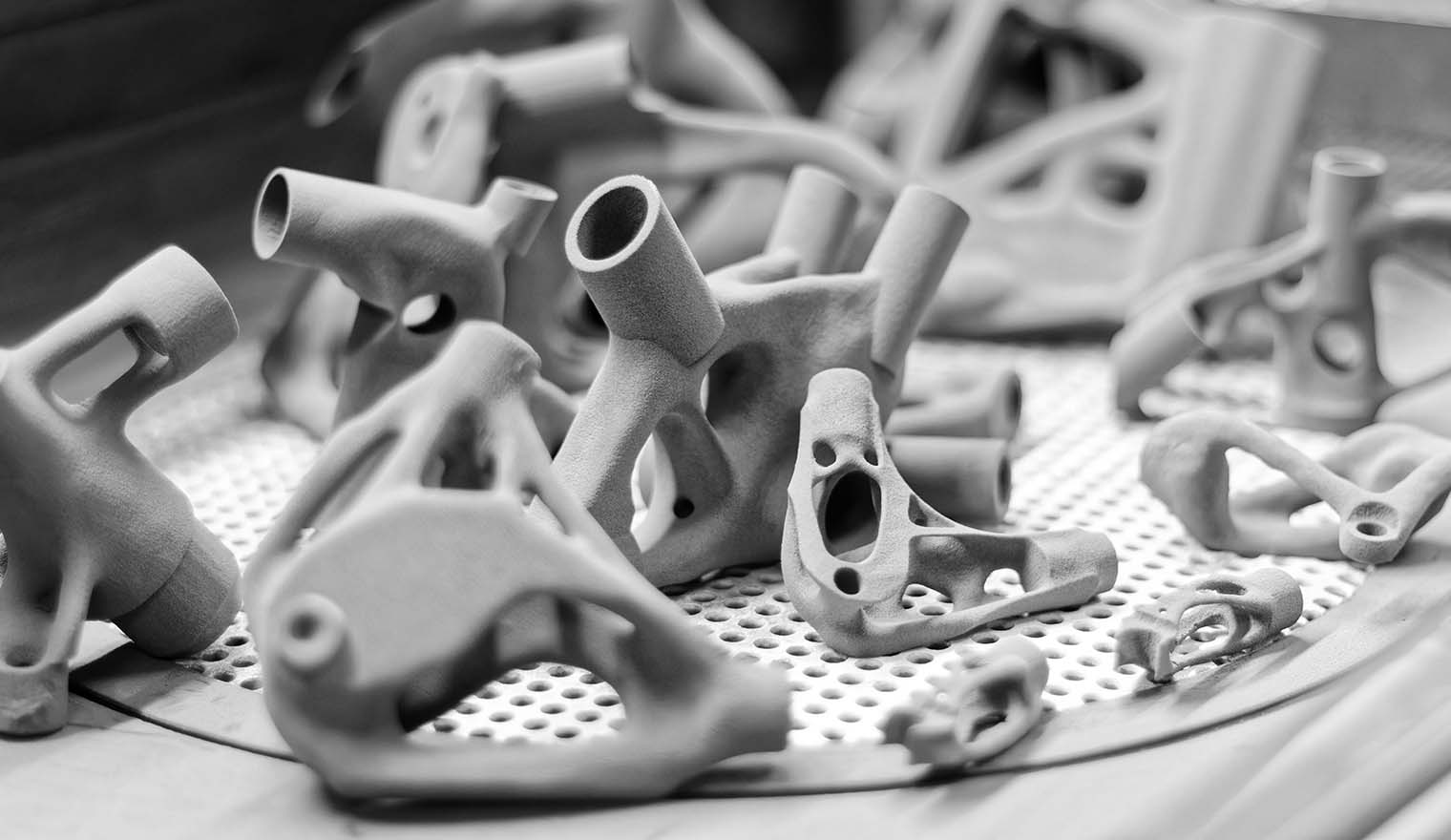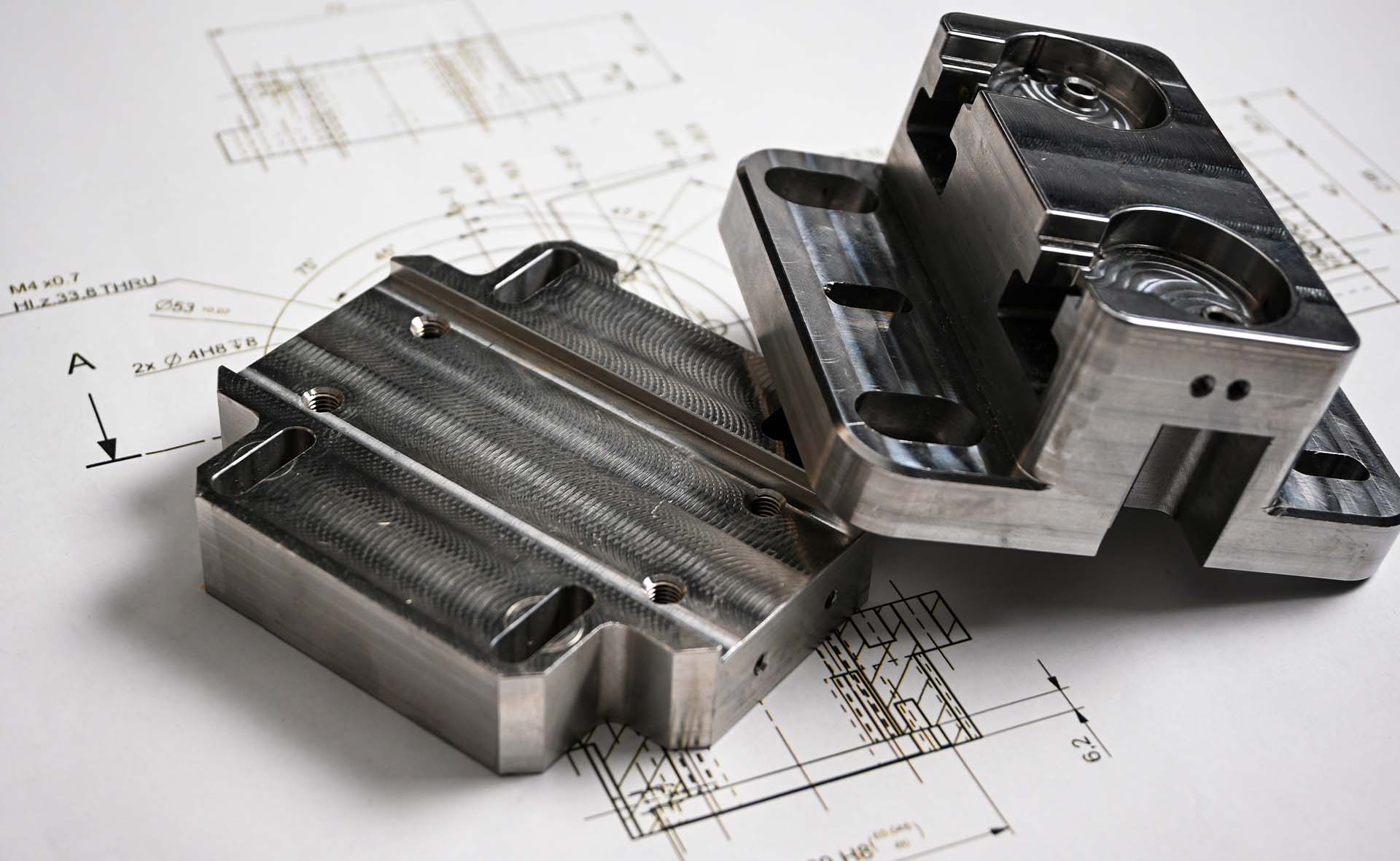3D printing and CNC machining are among the most widely used rapid prototyping (RP) technologies today. Both methods enable quick production of prototypes, are suitable for creating metal and plastic components, and deliver highly accurate results. Is 3D printing or CNC machining better for your custom part applications? In this article, learn the differences between the processes, how they compare in terms of cost, material, speed, and accuracy, and how to choose the right process for your prototyping application.
The main difference between the two processes is that 3D printing is an additive manufacturing technique, whilst CNC machining is a subtractive manufacturing technique. This means CNC machining starts with a solid block of material (called a blank), and cuts material away from the workpiece using pre-programmed rotating tools and cutters to shape the piece, often utilizing multiple CNC axes for enhanced precision and complexity. CNC machining offers excellent repeatability, dimensional accuracy, and a wide range of engineering-grade materials and post-processing options.

3D printing, or additive manufacturing, involves parts being created layer by layer using materials such as plastic filaments (FDM), resins (SLA/DLP), or plastic and metal powders (SLS/DMLS/SLM). 3D printing doesn’t require special tooling or fixtures, so the initial setup cost is minimal compared to CNC machining. Other 3D printing advantages include a greater level of design freedom, accuracy, speed, and the ability to reduce costs and weight in parts.
Both 3D printing and CNC machining are compatible with a wide variety of plastic and metal materials. Metal is more popular than plastic for CNC machining, though plastic has become increasingly popular. In contrast, plastics were once more popular than metals for 3D printing, though this is changing—especially in high-end industrial applications—as metal 3D printing becomes more affordable and accessible.
CNC machining offers a broader range of engineering-grade materials and are really only limited to soft, rubber-like materials such as flexible TPU, which are too soft to cut accurately, and specialty materials like certain nickel-based superalloys that are difficult to machine. For these difficult-to-machine materials, additive manufacturing is often ideal, as it allows for precise shaping without the wear and limitations of traditional cutting tools.
For one-off and small-batch prototyping, 3D printing is typically more affordable and suitable, as it involves little to no setup costs, and the pricing is mostly based on material usage and post-processing time. In comparison, CNC can achieve better economies of scale for higher quantities—typically in the double to triple digits—as setup efforts can be shared over multiple parts. Although the cost per part for 3D printing may decrease with quantity, it can’t achieve this in the same scale as CNC.
To give you an idea, a 3D printed part can start as low as a few dollars to tens of dollars for a single part. On the other hand, CNC prototyping typically starts at around $100 for a single piece in the U.S. and Europe, though in China, prices may start as low as $10 and up for simpler 3- or 4-axis parts, due to lower labour and setup costs.

Available for 3D Printing and CNC Machining
With CNC, the more material removed during machining, the longer the machining time and the higher the CNC costs. In a similar way, for 3D printing, the more material used, the longer the print time and the higher the costs. If the part has a large, solid build—especially with simple structures—it could be cheaper to CNC machine it, as less material removal is required. However, if the part is hollow, machining may become less efficient, making 3D printing a more cost-effective option.
CNC and 3D printing can both produce parts in several hours to days. Material removal is typically faster than deposition, making machining faster than printing. However, CNC machining requires more setup times to prepare the tooling and programming. On the other hand, 3D printing requires minimal setup efforts, making it quicker for small-batch or one-off production runs. As volumes scales up, CNC becomes more efficient.

Geometry: Although 5-axis machines (as well as additional axes serving specialized purposes) can handle very complex geometries, the additive nature of manufacturing enables 3D printers to produce far more complex geometries, such as lattice structures and intricate features that are often difficult or impossible to achieve with traditional subtractive methods like CNC machining.
Tolerances: The tightest tolerance achievable with 3D printing technologies like Stereolithography (SLA) is around ± 0.1mm (0.004″), or tighter under specific conditions. But precision CNC machines can hold tolerances as tight as ±0.025mm (0.001″) or tighter. In fact, many metal printed parts are post-machined to achieve tighter tolerances.
Surface Finish: 3D printing technologies like SLA and Multi-Jet Printing (MJP) can produce parts with fine, smooth, and textured layers, but CNC machining, with the right tools, can achieve even smoother surfaces.
By asking yourself the questions above, you’ll be able to narrow down your options. For early-stage prototypes, 3D printing may be the best choice, as it requires minimal setup, is cost-effective, and is quick. For batch prototypes in quantities of 50 to 100, or when tighter tolerances and specific engineering-grade materials are needed, CNC machining is worth considering. However, if certain complex geometries or intricate features are impossible to achieve with CNC, 3D printing may be the way to go.
If you’re uncertain about the best way to make your part, contact our engineers at info@hlhrapid.com, and our team will be happy to assist you! If you want to compare the costs of producing your part via CNC and 3D printing, upload your CAD file to our instant quote tool to get an estimate within seconds.
